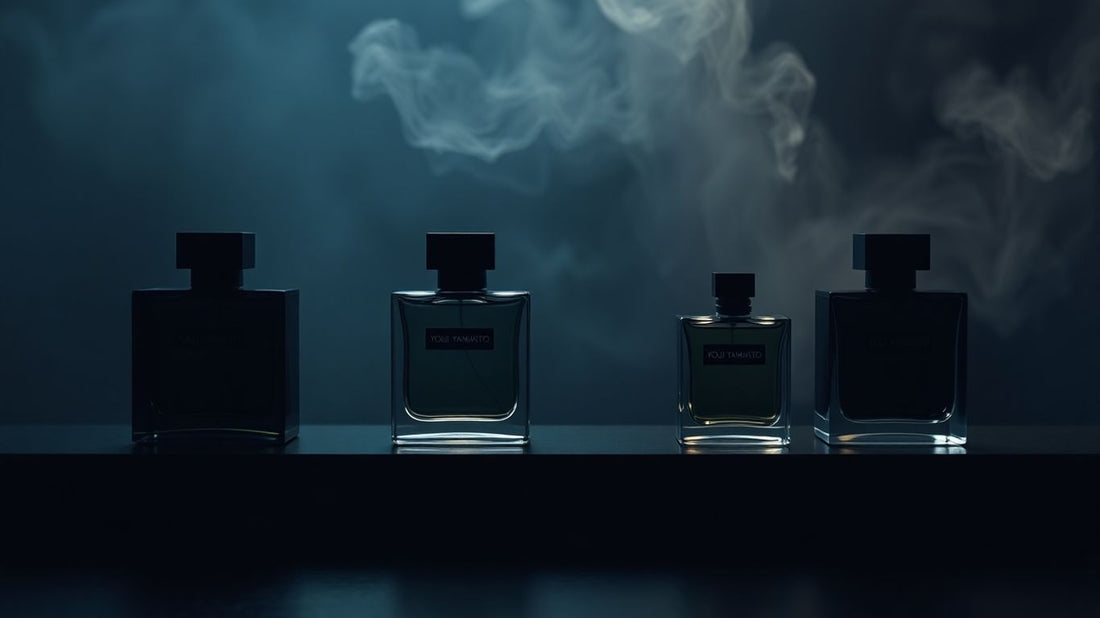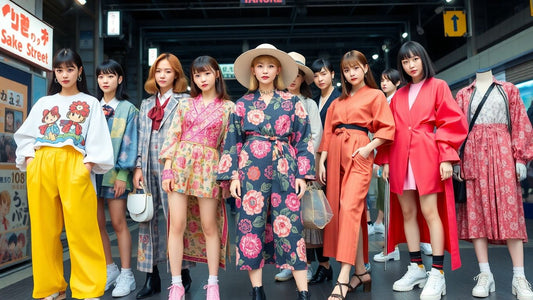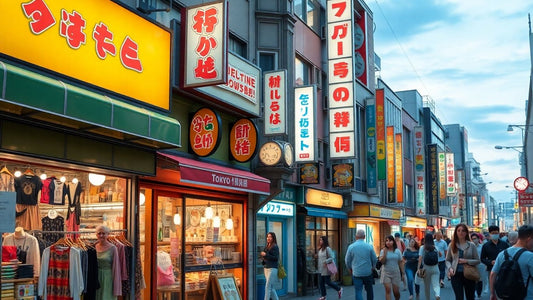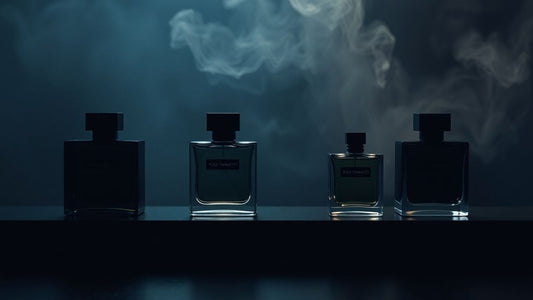
Yohji Yamamoto Perfume: A Deep Dive Into the Designer’s Signature Scents and Their Unique Allure
Yohji Yamamoto perfume stands out in the crowded world of fragrance. It’s not your average designer scent—there’s something a bit mysterious and different about it. Yamamoto’s approach is more about feeling and mood than just smelling nice. He draws from his Japanese roots, his love for imperfection, and his unique look at fashion. This gives his perfumes an edge that attracts a loyal following. Whether you’re a collector or just curious, there’s a lot to appreciate about these scents and the stories behind them.
Key Takeaways
- Yohji Yamamoto perfume is inspired by Japanese ideas like wabi-sabi, which finds beauty in imperfection.
- The first Yohji scent, launched in the 1990s, set the tone for the brand’s creative and sometimes unusual fragrances.
- Collaborations with famous perfumers and limited editions make some bottles highly sought after by collectors.
- The scents often blend unexpected notes, giving each perfume a layered and memorable character.
- Packaging is minimalist and thoughtful, reflecting Yamamoto’s signature style in both fashion and fragrance.
The Artistic Philosophy Behind Yohji Yamamoto Perfume

Yohji Yamamoto’s perfumes pull from the same raw honesty and complexity that shape his fashion—except here, it’s all about scent. Every bottle reflects a way of looking at the world that’s not about glossy perfection, but something more real.
Finding Beauty in Imperfection
There’s a certain comfort in knowing that not everything is supposed to be flawless. Yamamoto’s perfumes embrace that belief, often echoing the wabi-sabi approach. In practice, this means the fragrances don’t shy away from strange notes, tangled layers, or a bit of unpredictability. Things like smoky aloes, odd spices, or even something that seems out of place at first sniff—it’s all purposeful. Here’s what shows up in his perfumes:
- Intentionally uneven blends that keep the scent from feeling “too polished”
- Inclusion of raw, almost earthy notes that ground the fragrance
- Compositions that change over time, never static
In a world that’s always pushing for perfection, Yohji’s approach is almost a relief. There’s tension, messiness, and sometimes a wild streak—but everything feels intentional.
Reflections of Wabi-Sabi in Scent
Wabi-sabi is woven through Yohji’s work. In a perfume, it comes across as the acceptance of how each scent will shift with your skin, mood, or even the weather. Instead of aiming for a sterile, picture-perfect result, his fragrances seem to invite disorder. They’re both simple and complicated, like something you want to keep coming back to just to figure out all the pieces. It’s the quiet beauty of:
- Scent profiles that evolve and age naturally with wear
- Unexpected pairings of rough and delicate notes
- A feeling that the scent is both finished and somehow still in-progress
From Minimalism to Complex Composition
People sometimes expect minimalist scents from Yamamoto—maybe because his clothes have that stark, black-on-black look. But with perfume, he’s willing to surprise you. The signature might start simple, but layers get stacked: florals rubbing against woods, subtle fruits mixed with sharp resins, and textures that shift from powdery to green.
- Opening notes are rarely what you expect
- Drydowns can reveal completely different characters hours later
- Compositions reward patience and repeated wear
Yohji Yamamoto perfume is never about just making something beautiful; it’s about letting a scent tell the full story—scars, rough edges, and all.
The Evolution of Yohji Yamamoto Perfume Collections
Yohji Yamamoto’s journey into fragrance is almost as intriguing as his work with clothing. Blending subtle rebellion with refined detail, Yohji’s perfumes have changed over the years—but each new release still holds onto something unmistakably "Yamamoto." The collections span from signature launches to rare, sought-after bottles, each chapter bringing something different.
The Iconic Launch of Yohji
The original fragrance, simply called "Yohji," first turned heads in the mid-1990s. It wasn't just another designer perfume, but rather a partnership with Jean Patou and perfumer Jean Kerléo. They aimed for a chypre structure—a bold choice at a time when lighter scents ruled the shelves. The result was layered, a bit moody, and more about evoking emotion than following trends.
- First launched: 1996
- Main notes: chypre, fruity, spicy
- Created by: Jean Kerléo for Jean Patou
Yohji’s first fragrance didn’t try to please the masses. Instead, it asked: what if a perfume was just a quiet personal statement?
Collaborations With Renowned Perfumers
Since the beginning, Yohji Yamamoto hasn’t been afraid to work with the industry’s key noses. These partnerships have resulted in unique interpretations of his vision:
- Jean Kerléo: The original Yohji perfumes, with a focus on depth and complexity.
- Olivier Pescheux: Later compositions, adding warmth and brighter, modern twists.
- Annick Ménardo: Brought in her know-how for bolder, more experimental blends.
These collaborations didn’t always stick to a classic template; they often surprised fans with unusual blends.
Limited Editions and Rarity
What also sets Yohji Yamamoto’s perfume line apart is its embrace of scarcity. Many releases were purposely limited, adding to their draw:
| Year | Edition | Volume Issued | Distinctive Traits |
|---|---|---|---|
| 1997 | Yohji Homme | Few thousand | Rich, woody spices, masculine |
| 2013 | Yohji Senses Revival | Limited | Modern revamp of original scents |
| 2016 | Anniversary Editions | < 1000 | Numbered, special packaging |
- These rare releases drive up demand among collectors.
- Scarcity isn’t just hype—the bottles themselves often become collector’s items.
- Each relaunch or exclusive edition feels more like a quiet event than a mass-market drop.
There’s a certain thrill in tracking down a bottle of a limited Yohji release, knowing not many exist in the world.
Yohji Yamamoto’s fragrance collections don’t just follow a timeline. They mark shifts, collaborations, and brief moments where scent becomes something personal—and for a lucky few, unforgettable.
Signature Scents: Exploring the Most Memorable Fragrances
There's something oddly hypnotic about how Yohji Yamamoto as a brand channels energy into its perfumes. The scents don't try to fit in—they just are, unapologetically themselves. Each perfume feels almost like a conversation whispered in a dark hallway, meant just for you.
Yohji For Women: Chypre Elegance
Yohji For Women, the debut scent, throws away all assumptions about what a feminine scent should be. This perfume leans into complexity, built on a chypre structure but tweaked until it's barely recognizable. You get this odd play of soft fruits and pulsing licorice, which then melts into powdery and woody tones. It’s bold, but not in a loud way—more in a quiet, slow-burning sort of manner. Like slipping into a coat that just feels right, even if you’re not sure why.
- Top notes: Aldehydes, licorice, fruity accord
- Heart: Lily of the valley, rose
- Base: Sandalwood, musk, vanilla
- Released: 1996 (original), with limited relaunches
Yohji Homme: Masculinity Redefined
Yohji Homme does something interesting. Usually, you expect a men’s fragrance to be all fresh and woody, but this one goes off-script. It has coffee and anise right at the start. There’s also rum in there—unexpected and a little boozy. It’s kind of soft, not aggressive, almost comforting. The scent lingers in a really gentle way, and honestly, more than one woman has borrowed it. Labels don’t seem to matter with this one.
- Top notes: Coffee, anise, bergamot
- Heart: Rum, carnation
- Base: Cedarwood, leather, musk
Seasonal Releases and Exclusive Blends
Over time, Yamamoto’s perfume house dropped some limited editions and seasonal blends. You could almost miss them if you blinked—they were that rare. But the fans who got their hands on them still talk about releases like Yohji Essential or Senses. These weren’t meant for everyone, just those willing to look a little harder.
Some qualities you’ll find in these releases:
- Brief availability, sometimes only a single season
- Unusual ingredients, from tea notes to unexpected spice
- Individual numbering (in some editions) that gives each bottle a bit of personality
| Fragrance Edition | Year Introduced | Notable Notes | Rarity Level |
|---|---|---|---|
| Yohji For Women | 1996 / 2013 | Licorice, chypre | Still rare |
| Yohji Homme | 1999 / 2013 | Coffee, anise, rum | Collector's gem |
| Yohji Senses | 2015 | Citrus, musk | Very limited |
| Yohji Essential | 2013 | Spices, woods | Discontinued |
If you’re lucky enough to encounter one of these fragrances today, trying it feels like discovering a secret passage in a familiar building—unexpected and strangely personal.
The magic with Yohji Yamamoto perfumes isn’t just in how they smell, but in how they make you feel seen, even if no one else notices what you’re wearing.
The Sensory Experience of Yohji Yamamoto Perfume

Yohji Yamamoto’s perfumes are never straightforward. They pull you in—maybe catch you off guard—with scents that feel a little mysterious and sometimes hard to pin down. Wearing a Yohji scent isn’t just about smelling nice; it’s about noticing how it changes as you move, and how it feels a bit different every time you return to it.
Layered Notes and Unconventional Ingredients
Yamamoto’s perfumes walk that fine line between minimal and complex. They often kick things off with a simple introduction (maybe a bit of citrus, maybe tea, maybe incense), but within seconds or minutes, the scent grows legs. Suddenly you notice something sweet, then something salty, or maybe even a little bit of leather.
- Juxtapositions like powdery florals mixed with dry woods
- Hints of bitter herbs or smoky vetiver, paired with soft musk
- Occasionally, an ingredient that feels almost out of place—like licorice—or a salty sea note
Here’s a quick table highlighting a few elements in some key Yohji perfumes:
| Perfume Name | Top Notes | Mid Notes | Base Notes |
|---|---|---|---|
| Yohji (1996) | Bergamot, Anise | Violet, Jasmine | Sandalwood, Licorice |
| Yohji Homme | Lime, Galbanum | Leather, Incense | Cedarwood, Musk |
Sometimes, it feels like these scents have minds of their own. What starts as soft or sharp might end up somewhere surprisingly warm or shadowy by the end of the day.
Visual and Emotional Impressions
A Yohji perfume never just sits quietly on your skin. It invites you to notice it throughout the day—it’s part art, part mood-changer. Here’s what people often experience:
- Scents that call to mind dusky evenings or rainy streets in Tokyo
- Feelings of calm, nostalgia, or even a bit of isolation (but in a good way)
- A sense that you’re wearing something with history, not a generic department store fragrance
Wearing a Yohji fragrance can feel like keeping a secret; it doesn't grab people’s attention right away, but those who get close will notice the difference.
Longevity and Sillage
Some say Yohji perfumes are like stories—meant to be discovered over time, not all at once. Here’s what to know about how they perform:
- Longevity: Most last throughout the workday, fading gently without ever disappearing quickly.
- Sillage: Usually more intimate, meaning these are scents you and those near you will notice—not everyone in the room.
- Changes: The scent will shift subtly over hours, sometimes with a note or two rising unexpectedly before settling again.
In short, wearing Yohji Yamamoto perfume is about paying attention. The more you notice, the better it gets.
Influence of Japanese Heritage on Fragrance Design
Yohji Yamamoto’s approach to fragrance really can’t be separated from his Japanese background. You notice little details here and there: restraint in the packaging, unusual flavor in the notes, and the focus on subtlety over brashness. These choices aren’t accidents—they’re part of a bigger philosophy that runs through both his clothes and his perfumes.
Traditional Elements in Modern Perfume
- Yamamoto draws inspiration from traditional Japanese values, especially beauty in simplicity and imperfection.
- He often uses natural ingredients like green tea, yuzu, and incense, all deeply rooted in Japanese culture.
- Fragrances tend to balance fresh and deeper tones, echoing the way Japanese architecture or gardens combine minimalism with small moments of surprise.
| Common Japanese Influences | Typical Fragrance Notes |
|---|---|
| Simplicity & restraint | Green tea, hinoki wood, sakura |
| Natural transitions | Bamboo, yuzu, rice powder |
| Subdued scent signatures | Incense, moss, white florals |
There’s something quiet yet powerful in these perfumes, almost as if you’re catching a fragment of a memory on a windy afternoon in spring.
Tokyo Inspirations
Tokyo’s energy runs beneath a lot of Yamamoto’s scent work. The city blends traditional temples and busy streets, which shows up as contrasts in his perfumes—sometimes a cool, crisp opening gives way to a smoky or spicy finish. Here are a few ways Tokyo life sneaks in:
- Modern city notes, like metallic or ozone touches, mimic the city’s constant movement.
- Calm undercurrents, inspired by Zen gardens or temple rituals, add depth and softness.
- Snapshots of cherry blossom season, rainy days, and neon-lit nights mix nostalgia with innovation.
The Spirit of Noh and Silent Communication
Yamamoto has talked about how much traditional Japanese theater—like Noh—inspires him. In Noh, silence, pauses, and subtle gestures speak volumes. The same quiet communication is part of his perfumes. They don’t shout; they linger. Scents unfold slowly, revealing hidden layers over time, instead of revealing everything all at once.
- Perfume as an unspoken connection between wearer and those around them
- Understated projection (not overwhelming, but present)
- Hidden complexity beneath a minimal surface
This kind of silent communication isn’t just a style—it mirrors the broader Japanese approach to fashion and scent, focusing on small details and moments. If you’re curious about how Yamamoto first blended these influences into fragrance, his debut women’s scent from 1996 marked the start of this subtle but lasting trend in his perfume collections.
Cult Following and the Allure of Rarity
Collectors and Enthusiasts Worldwide
Getting your hands on a bottle of Yohji Yamamoto perfume is more than just a shopping trip; for many, it feels almost like a quest. Fans from all corners of the globe hunt down each release, connecting through niche online forums and private groups. Some share stories of traveling to distant boutiques, while others swap or trade rare finds across continents.
- People will often join waitlists or alerts for restocks
- Online auctions for discontinued bottles can get heated
- Some have even reported flying internationally to grab limited editions
The rush of finally securing that rare scent after months—or even years—of searching almost becomes as important as the perfume itself.
Perfumery as a Statement of Identity
For many, wearing Yohji Yamamoto’s scents isn’t about fitting in or following trends. Instead, it's something deeply personal—a subtle signature. The fragrances tend to be complex and a bit unconventional, which means they stand out quietly rather than shouting for attention. This fits right in with the designer’s reputation for celebrating individuality and going against the grain.
- Each scent was created with a purpose, appealing to those who favor uniqueness
- Wearing these perfumes is about expressing a certain mindset rather than just smelling good
- There’s pride among fans in being part of a select group that “gets it”
Legacy in Contemporary Culture
Even as new perfume lines flood the market, Yohji Yamamoto’s fragrances have this lasting appeal. They aren't just about nostalgia—there's a sense that these scents are future classics. Collectors treat bottles with the same care as wearable pieces from his runway shows. The fact that so many fragrances are produced in limited runs only adds to their reputation. A table below illustrates how some notable editions have climbed in value:
| Fragrance Name | Year Released | Estimated Price in 2020 | Estimated Price in 2025 |
|---|---|---|---|
| Yohji (original) | 1996 | $150 | $400 |
| Yohji Homme | 1999 | $120 | $350 |
| Yohji Yamamoto II | 2013 | $90 | $280 |
Sometimes, what really sets Yohji Yamamoto perfumes apart is their rarity. The chase, the discovery, the feeling when you finally get a bottle in your hands—those are moments you don’t really forget. For some, it’s almost addictive.
Packaging and Presentation: Beyond the Bottle
It’s no secret that Yohji Yamamoto approaches packaging with the same level of care he gives to his clothing lines. Every box and bottle looks like it’s had every detail considered, and the results are always interesting. His bottles don’t shout for attention, but they make people curious.
Signature Minimalist Design
- The bottles almost always use simple shapes—cylinders, rectangles, sometimes something with a wavy line, but no wild flourishes.
- Colors are kept to a handful: matte black, translucent glass, and maybe a hint of metallic or paper for labeling.
- Labels are usually quiet, barely-there script, or just the designer’s signature in fine print.
With Yohji Yamamoto fragrance packaging, less really is more; it’s designed to feel calm and intentional in the hand.
Symbolism in Perfume Bottles
- Many bottles mimic Yamamoto’s signature tailoring—long, flowing lines or a drape that hints at a fold of fabric.
- There’s often an asymmetry, like the cap tilting to one side or the bottle resting slightly off-center, echoing the designer’s knack for the unconventional.
- Some limited editions feature bottle etching or engravings, playing with light and shadow just like he does on the runway.
The Role of Texture and Materials
- You’ll feel a difference in the grip: some bottles have a frosted finish, others use raw-feeling paper for the box, and a few even use textured stoppers.
- Even the boxes are thoughtful—thicker cardboard, fabric wrappings, or hand-stitched seams pop up occasionally.
- Rarely, a bottle might use a material like dark wood or high-polish metal, which stands out among the competition.
Here’s a quick table comparing some packaging features across three popular Yohji Yamamoto fragrances:
| Fragrance | Bottle Shape | Material Finish | Notable Detail |
|---|---|---|---|
| Yohji for Women | Tapered cylinder | Satin glass | Handwritten script label |
| Yohji Homme | Rectangle | Matte black | Angular, asymmetrical cap |
| Yohji Senses | Squared off | Frosted glass | Minimal label, paper-textured box |
Honestly, when you pick up a Yohji Yamamoto perfume, the package feels almost like it’s meant to be part of your space—a little piece of his world that you keep on your shelf.
Conclusion
Wrapping things up, Yohji Yamamoto’s perfumes are a lot like his clothes—unexpected, thoughtful, and a little mysterious. They don’t shout for attention, but they definitely leave an impression. If you’re looking for something that stands out from the usual, his scents are worth a try. There’s a sense of honesty in them, a kind of quiet confidence that doesn’t try too hard. Just like his fashion, the perfumes feel personal and a bit imperfect, which is what makes them interesting. Whether you’re already a fan of his designs or just curious about a different kind of fragrance, Yohji’s signature scents offer something you won’t find anywhere else. They’re not for everyone, but maybe that’s the point.
Frequently Asked Questions
What makes Yohji Yamamoto perfumes different from other designer scents?
Yohji Yamamoto perfumes stand out because they are inspired by Japanese culture and the idea that beauty can be found in imperfection. The scents are often unique, mixing simple and complex notes to create something special that doesn't smell like most other perfumes.
Are Yohji Yamamoto perfumes for men or women?
There are Yohji Yamamoto perfumes made for both men and women. Some scents are designed for women, while others are for men, but many people enjoy wearing any of them, no matter who they were made for.
Why are some Yohji Yamamoto perfumes hard to find?
Some Yohji Yamamoto perfumes are made in small batches or only for a short time, making them rare. This makes them popular with collectors and people who like to have something unique.
How long do Yohji Yamamoto perfumes last when you wear them?
Yohji Yamamoto perfumes are known for lasting a long time on the skin. The scents often stay noticeable for many hours, and some can even last all day.
What does Japanese heritage mean for Yohji Yamamoto perfumes?
The perfumes often use ideas from Japanese art and traditions. This means you might find scents inspired by things like Japanese gardens, the calm feeling of Noh theater, or the wabi-sabi idea of finding beauty in things that aren't perfect.
What do the bottles of Yohji Yamamoto perfume look like?
The bottles usually have a simple, clean design. They often use shapes and materials that feel modern but also have a hint of Japanese style, making the bottles as special as the scents inside.


















